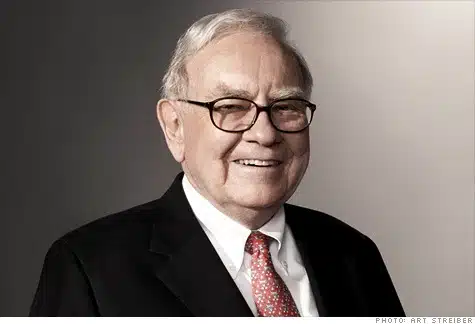What Warren Buffet Can Teach Us About Annual Reports


Full Platform Overview Chat With Us



Full Platform Overview Chat With Us




In early 2012, to the market’s surprise, celebrity investor Warren Buffett, the “Sage of Omaha,” bought $10.7 billion worth of IBM stock. He now holds a 5.4% stake in the computer giant.
Mr. Buffett is famous for sitting out the dot.com bubble. He warmed the cockles of many skeptical hearts when he declared, If I don’t understand it, I won’t invest in it. By which he meant Internet-related stocks with their “palace in the air” projections for growth. He likes “old” technologies like railroads and steady-eddies like insurance. He seemed to shun the siren song of all things digital.
Because IBM sent him a copy of its printed annual report.
That’s right: the third richest person on earth rummages through his mail, looking for things of interest.
Mr. Buffett took the annual report home, for a closer look over the weekend. What was he looking for? Mr. Buffett prefers companies offering a well-argued 5- or 10-year opportunity. “He said he had been impressed by IBM’s road map,” the BBC reported after the $10.7 billion investment was announced.
Make it convenient for your target audience to use the thing. The 82-year-old Mr. Buffett tossed the physical annual report into his briefcase. He sat in a comfy chair at home and read the thing.
Sell the vision. Annual reports are ostensibly about the year just past: a history lesson, a look back, a chapter closed, a record for the archives. But, as public companies like IBM know, annual reports can be just as much about where you’re headed: your promise … improvements … future gains … progress from today’s not-so-rosy Point A to tomorrow’s much better Point B.
Before you abandon your paper annual report completely, consider this true story. It’s about having the right communications item in the right place at the right time.
The Rhode Island Foundation is one of America’s oldest community foundations (est. 1916). Each year, it publishes a well-designed, well-written annual report. It’s available online, as a downloadable PDF; and also in hard copy.
In previous years, the Foundation printed as many as 10,000 hard copies for mailing. But in an effort to save money and trees, Melanie Coon, SVP for Communications & Marketing, has whittled that number down. “Last year, we mailed
Among those who still get printed copies: local lawyers.
Therein lies a tale.
An elderly man walks into a law office in Rhode Island. He’s there to make a will, to get his affairs in order before it’s too late.
He’s early for his appointment. To pass a few minutes, he picks up the first thing that catches his eye: a handsome publication with beautiful photography of familiar scenes.
It’s the Rhode Island Foundation’s most recent annual report. He’s never heard of the Foundation, but now he starts reading. And he likes what he reads. He likes how the Foundation gives away money to the state’s nonprofits to help them with their missions.
The man has no close family left. But he does have a sizable estate. And up to now, he really wasn’t sure where to leave it. Now he has an idea. When the lawyer calls him in, the man takes along the Foundation’s annual report. A couple of years later, upon the man’s passing, the Rhode Island Foundation received a small fortune from him in the form of a charitable bequest.
All thanks to a printed annual report. Right item. Right place. Right time.
Melanie Coon was smart when she trimmed the Rhode Island Foundation’s mailing list.
“We mailed postcards to about 3,100 folks who had received annual reports in the past but had no other known connection to the Foundation. We sent e-postcards to about 1,400 folks who fell into that same category (we only had email addresses for the 1,400). The postcards encouraged people to call or write us if they wished to receive a printed copy of the report, and of course we provided the address of the online annual report on the postcard.”
The result?
“Eleven people requested hard copies. And we saved a bundle. Also we had significantly fewer returned reports than in previous years.”
Melanie got the basic idea at a conference. “Someone from a major private foundation stood up and said he had sent postcards to all the people who formerly had received the foundation’s annual report, encouraging them to request a hard copy and providing the address of the online annual report. ZERO people asked for a hard copy.”
Don’t throw the proverbial baby out with the bath water.
Melanie still makes sure that Rhode Island’s law offices receive hard copies as reading matter for their waiting rooms. A downloadable PDF simply won’t do that job.
This post originally appeared in the Ahern Donor Communications Newsletter
Comments
[Headlines] Using Facebook for Your Nonprofit |